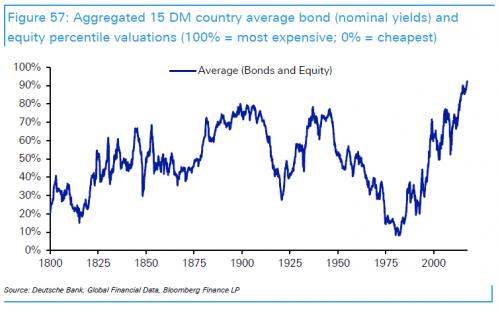Via Deutsche:
Figure 57 updates our analysis looking at an equal weighted index of 15 DM government bond and 15 DM equity markets back to 1800. For bonds we simply look at where nominal yields are relative to history and arrange the data in percentiles. So a 100% reading would mean a bond market was at its lowest yield ever and 0% the highest it had ever been. For equities valuations are more challenging to calculate, especially back as far as we want to go. In the 2015 study (‘Scaling the Peaks’) we set out our current methodology but in short we create a long-term proxy for P/E ratios by looking at P/Nominal GDP and then look at the results relative to the long-term trend and again order in percentiles. Nominal GDP data extends back much further through history than earnings data. When we have tracked the two series where the data overlaps we have found it to be an excellent proxy. Not all the data in Figure 57 starts at 1800 but we have substantial history for most of the countries (especially for bonds).


